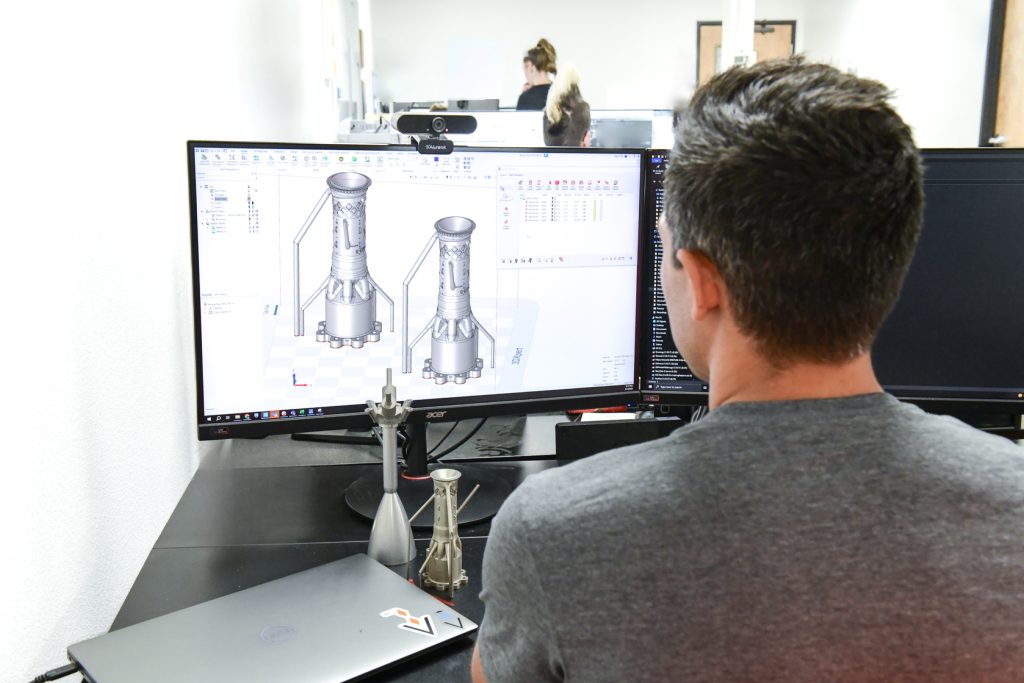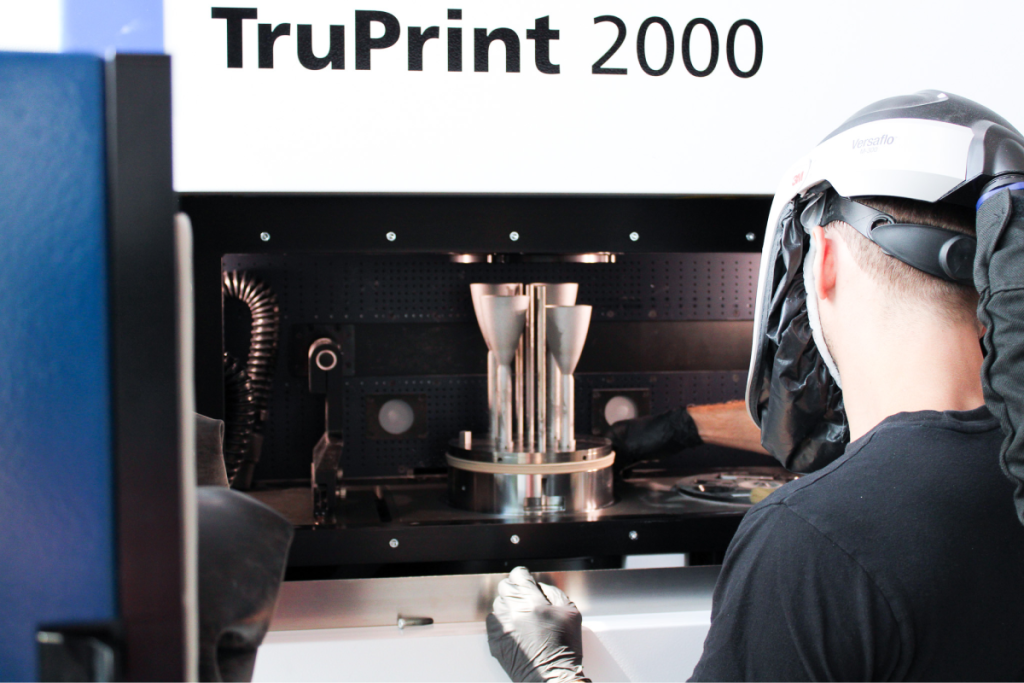Over half a century has elapsed since mankind first stepped on the Moon, and space missions still entail a monumental effort from scores of the brightest minds in engineering. However, many significant challenges in space exploration have since become a thing of the past – thanks to additive manufacturing.
Companies using 3D printing technologies, including Oqton 3DXpert software, have become indispensable allies in lunar missions.
One such example is Agile Space Industries, a provider of in-space propulsion solutions. The US-based company manufactures thrusters and rocket engines offering everything from design, 3D printing services, and subtractive manufacturing to testing capabilities.
3D printing and propulsion systems are a match made in heaven. “Additive manufacturing opens the design space to infinite possibilities,” Dustin Crouse, senior additive manufacturing engineer at Agile Space Industries, says. “It allows us to drastically reduce the mass of thrusters and quickly iterate on new designs.”
Space exploration companies like Astrobotic or ispace rely on Agile Space to develop mission-critical parts in record time. Agile Space can go from design and manufacturing to assembly and hot-fire testing within weeks. Traditionally, this process would take years.

3DXpert is vital to their efficiency. For a start, the software gives Agile Space full process control. To ensure consistency in production, development engineers lock parameters and limit the changes that can happen in the production of a thruster. Production engineers can still move and delete components or update serial numbers, but many functionalities are fixed to avoid accidental changes.
Staying faithful to the design
Since they started using 3DXpert, Agile Space can slice 3D models without converting to STL files, which makes a considerable difference. File conversions used to cause many operational headaches, according to Kyle Metsger, Agile Space’s director of additive manufacturing.
If you convert your 3D models to an STL, you risk deviating from the original geometry. “Our components have fine channels, fine features, and critical tolerances. When you turn a CAD model into an STL, you create an approximation of the original geometry and introduce variation. Since we’re printing holes and channels that are several thou in diameter, dimensional variation is very hard to control,” Metsger explains.
Even small deviations could pose a big problem because features have a direct impact on the product’s performance. In 3DXpert, Agile Space doesn’t have to deal with that type of risk.

Fast data preparation with complex geometries
Two monumental improvements Agile Space has experienced since adopting 3DXpert are time-to-slice and hardware requirements. Their components’ CAD models are ‘beefy’ because they include internal features and high resolution. Complex CAD models make for big STL files.
“When you convert one of our CAD models into an STL, it could be one gigabyte or larger. The hardware requirements for a file of that size incrementally increase. We’ve had situations where we move the file within the data preparation software, and it takes 20 minutes to load,” Metsger says.
When the company 3D printed a four-inch thruster injector component without 3DXpert, data preparation took 14 hours and there was a one to five Micron deviation in the STL file, depending on the resolution.
With 3DXpert, Metsger can slice the native CAD model, so the RAM requirements are much smaller.
This had significant implications for workflows. “We used to do the data preparation during the workday and let the computer run overnight to slice the file. We couldn’t print the part on the same day. With 3DXpert, we’ve seen a 60 to 70% reduction in overall time from build prep to machine,” Metsger adds.
These time savings are just the beginning. As Agile Space and the 3DXpert team continue to collaborate, they rapidly develop and implement new features that will secure their position at the forefront of the space industry.

Discover how other aerospace companies are using additive manufacturing and 3DXpert to transcend the limits of traditional manufacturing and push performance further in the white paper Additive Manufacturing in Aerospace.
Want to help select the winners of the 2024 3D Printing Industry Awards? Join the Expert Committee today.
What does the future of 3D printing hold?
What near-term 3D printing trends have been highlighted by industry experts?
Subscribe to the 3D Printing Industry newsletter to keep up to date with the latest 3D printing news.
You can also follow us on Twitter, like our Facebook page, and subscribe to the 3D Printing Industry Youtube channel to access more exclusive content.
Featured image shows an Agile Space employee using 3DXpert. Photo via Oqton.



